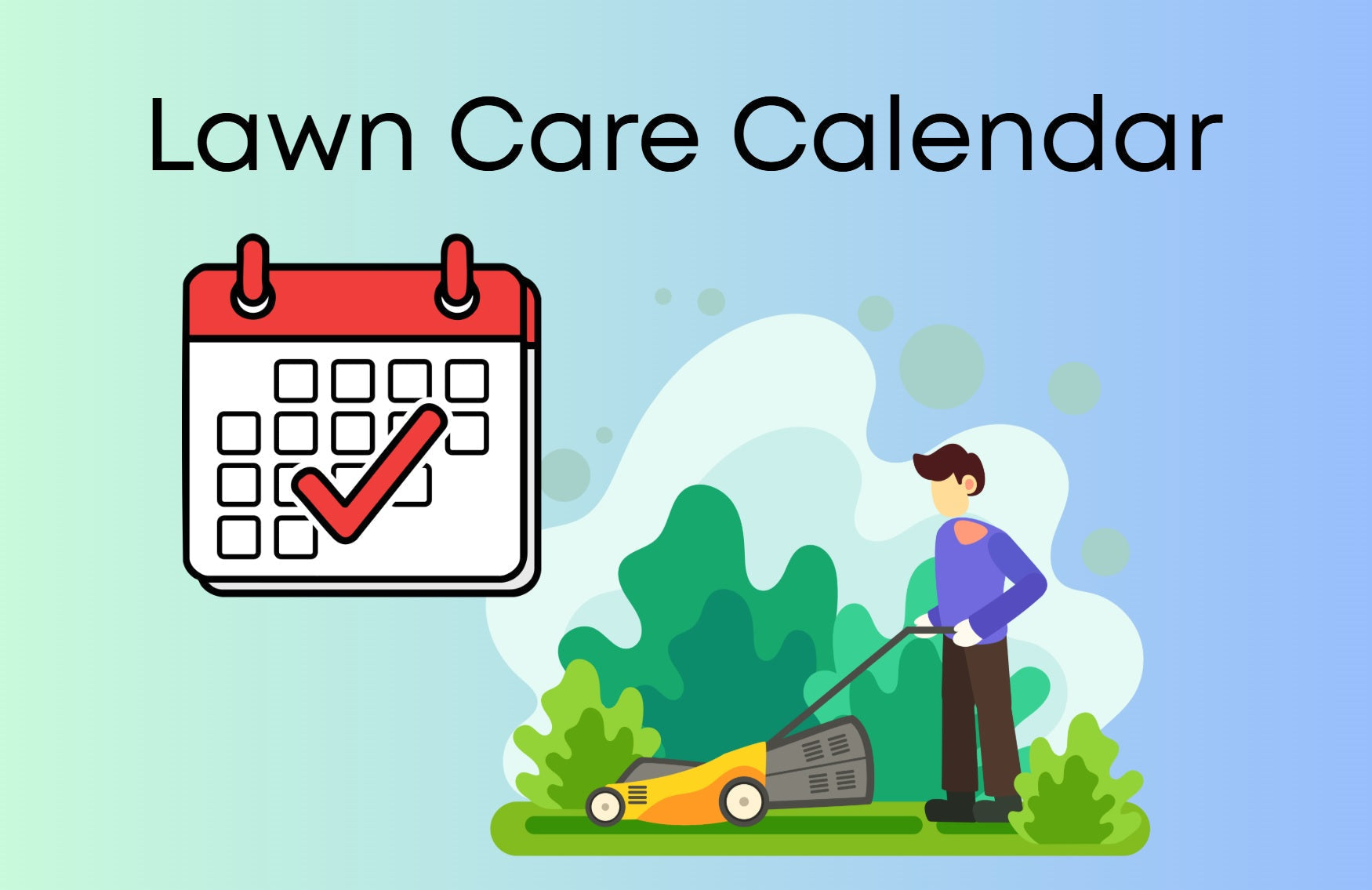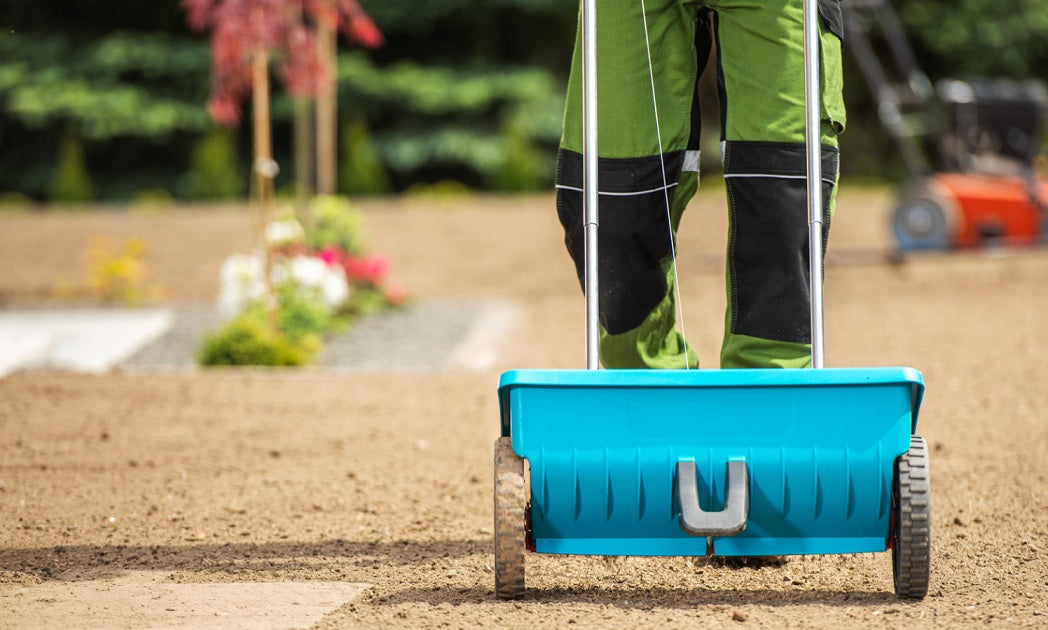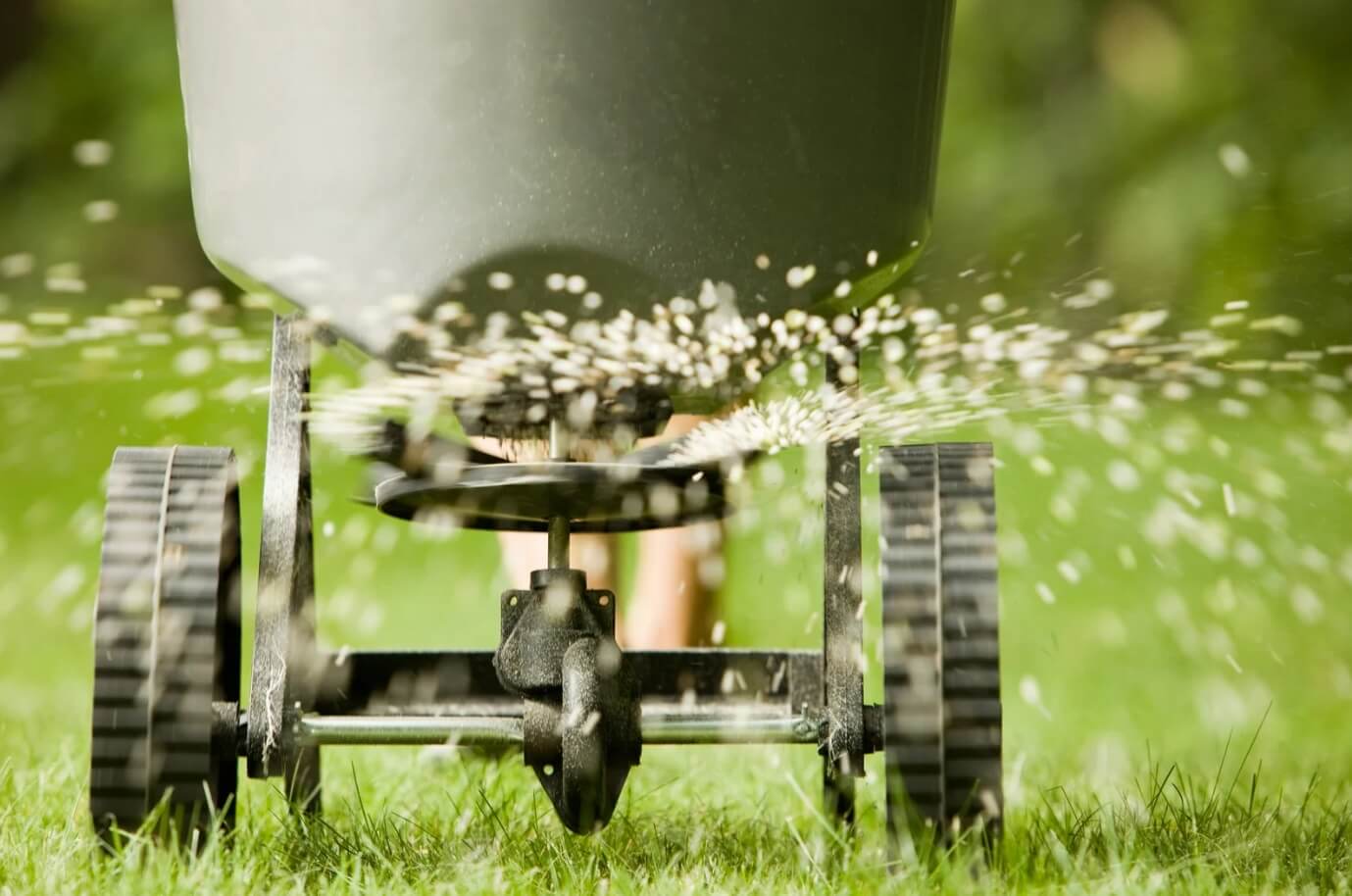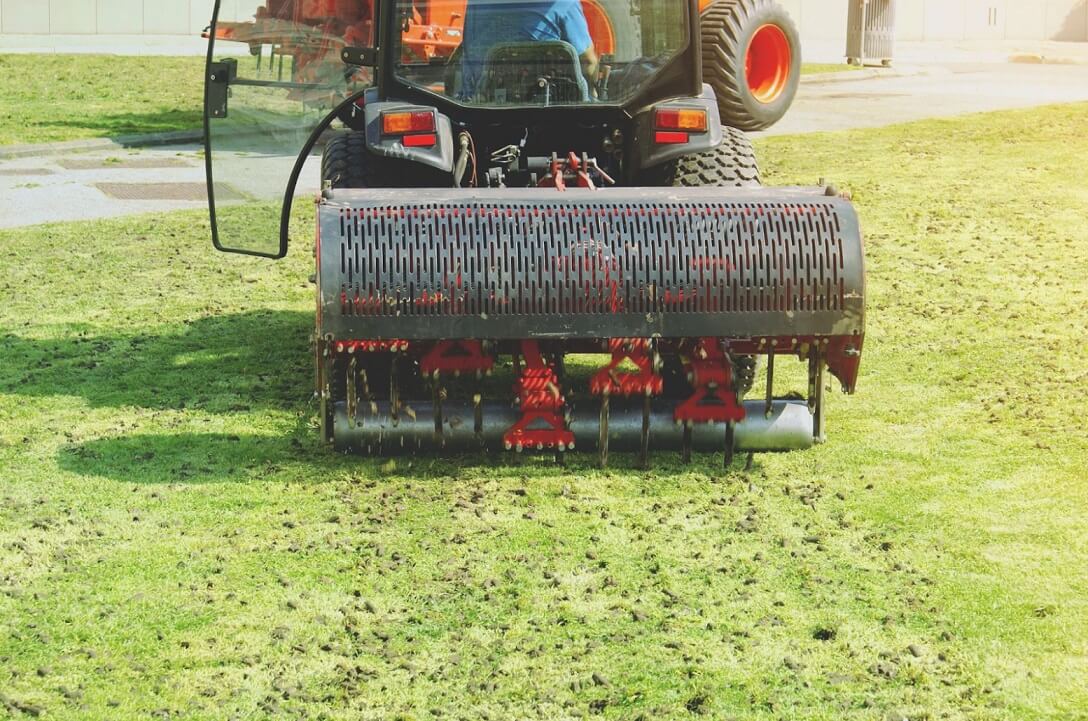Most of us keep lawns out of love for nature. We enjoy the feeling of soft grass under our feet and the open space where children and pets can play. That is why, for many, lawn care is a hobby and a source of pride.
But as any homeowner knows, caring for a lawn is a recurring task. It is not something that can be done once and forgotten. You’ve to constantly care for the soil nutrients, watering, mowing, and seasonal changes - and then expect results.
If you are into lawn care or have recently developed an interest, this guide is for you. It covers every step a homeowner needs to keep their lawn fresh and lush green, from knowing about their soil, watering, and fertilizing to aeration, dethatching, and mowing with modern, automated tools.
1. Start by Knowing Your Lawn
Lawn care is very subjective. I mean, every yard has its own soil, climate, and grass type. What works perfectly for one homeowner may not work for another. So, the first step is to really know your lawn, because that knowledge shapes everything that follows: when to water, what fertilizer to use, and how often to mow.
Types of Grasses
There are two fundamental grass types: cool-season and warm-season.
Cool-season grasses such as Kentucky bluegrass, perennial ryegrass, and tall fescue grow best in regions where temperatures stay between 60°F and 75°F. They thrive in the northern parts of the United States and grow most actively during spring and fall when the air is mild and soil moisture is steady.
Warm-season grasses like Bermuda, Zoysia, St. Augustine, and centipede grass are suited for higher temperatures, between 80°F and 95°F. These are more common in southern and coastal areas where summers are long and hot. They slow down as temperatures drop, which is why they turn brown or go dormant in winter.
Soil Type and pH
Soil is the foundation on which your lawn grows. Its structure and pH value decide how well the roots can absorb nutrients and water. There are generally four soil types: sandy, silty, clay, and loamy.
- Sandy soil has coarse particles with wide spaces between them. It drains water quickly and warms up early in spring, but because of its loose texture, it struggles to hold nutrients.
- Clay soil has very tightly packed particles. It retains moisture for a long time and is rich in nutrients, but poor drainage leads to compacting and root suffocation. Aeration is frequently required for such soils.
- Silty soil has medium-sized particles, a mix between sand and clay. It feels soft and smooth when rubbed between fingers and holds nutrients well. However, it can compact over time.
- Loamy soil is a balanced blend of sand, silt, and clay. It combines the best features of all three. Loam is considered the ideal soil for most lawns.
Next, we have soil pH. It tells you whether it is acidic or alkaline. A reading below 7.0 means acidic; above 7.0 means alkaline. Most lawn grasses grow best in slightly acidic soil, ideally between 6.0 and 7.0. Experts recommend testing your soil every three years to understand what it needs and how healthy it is.
You can test it at home using a simple pH kit or send a sample to your local agricultural extension service for detailed analysis. Based on results, you can perform soil amendment, i.e., add lime to raise the pH or sulfur to lower it.
2. Water Right: Deep, Timed, Efficient
Watering is one of the most important parts of lawn care, yet it is also one of the most misunderstood. Many homeowners water their lawns too often or too lightly, which creates shallow roots that cannot withstand heat or drought.
Best Time to Water the Lawn
Based upon our research, the best time to water your lawn is early in the morning, ideally between 5 am and 10 am. At this time, temperatures are cooler and the wind is normally calm, so water can soak into the soil before it evaporates.
If you water in the afternoon, that leads to quick evaporation. Whereas, in the evening/night, watering is not recommended. It keeps the grass wet overnight, increasing the risk of fungal disease.

Amount of Water a Lawn Needs
Most lawns need around 1 to 1.5 inches of water per week (including rainfall). The goal of watering is to moisten the soil 6 to 8 inches deep, which encourages grass roots to grow downward where moisture lasts longer. A small test to check is to push a screwdriver into the ground; if it moves 12 to 15 cm down easily, the soil has been watered enough.
Frequency of Watering
Deep watering once or twice a week is far better than light watering every day. Frequent shallow watering keeps the surface damp but does not allow roots to develop strength. Deep, less frequent watering builds drought resistance and helps the lawn stay green even during warm, dry weeks.
Efficient Watering Techniques
Automatic sprinklers and smart irrigation systems make it easier to maintain consistency. For even better efficiency, adjust sprinklers so that water does not reach sidewalks. Drip systems and rotary sprinklers can be used, too, for larger lawns because they provide uniform coverage without wasting water.
3. Aerate Your Lawn
Aeration is the process of creating small holes in the soil to allow air, water, and nutrients to reach the grass roots more easily. Over time, soil becomes compacted by foot traffic, rainfall, and mowing, making it harder for roots to breathe and absorb nutrients. Aeration loosens this compacted layer and refreshes the entire root zone.
Types of Soil Aeration
There are two main aeration methods: spike aeration, which uses solid tines to poke holes, and core aeration, where small plugs are removed from the soil. Core aeration is generally considered more effective because it relieves compaction and creates long-lasting channels for water and nutrients.

Best Time to Aerate Lawn
Aeration is recommended at least once a year, though the timing depends on the type of grass you have.
- Cool-season grasses should be aerated in early fall or spring, when they are actively growing.
- Warm-season grasses respond best to aeration in late spring or early summer.
4. Dethatch When the Lawn Feels Spongy
Thatch is the dense layer of dead grass stems and roots that forms between the soil and the living grass blades. A thin layer (about ¼ inch) is actually beneficial as it helps insulate the soil and retain moisture. But when it grows thicker than ½ inch, it starts to block nutrients from reaching the roots, making Dethatching essential.

How to Check if Soil Needs Dethatching?
If your lawn feels soft and bouncy underfoot, it might be time to Dethatch. You can check for dethatching by cutting out a small section of turf with a trowel or spade. If the brown/spongy layer between the green grass and the soil is thicker than half an inch, it’s time to act.
Master Lawn Mowing Techniques
Mowing a lawn is as necessary as getting a haircut. An overgrown lawn not only looks untidy, but it also diminishes the very benefits you hoped for when you first planted it.
When to Mow the Lawn
Set a mowing schedule according to the grass height and growth rate. Trimming once a week during the growing season is sufficient for most. If we talk about the best times to mow, early morning (8 am to 10 am) or late afternoon (4 pm to 6 pm) are considered ideal, as the cooler temperature prevents stress and water loss.
Always follow the “one-third rule”. Never cut more than one-third of the blade height at once. Because if you cut too short, it exposes the soil and promotes weed invasion, which weakens the turf.
Optimal Grass Height
Cutting height is a function of grass type. Cool-season grasses such as fescue or bluegrass stay healthy between 2.5 and 4 inches. Warm-season grasses such as Bermuda or zoysia perform better between 1 and 2 inches. Raise the mowing height slightly during summer to help the lawn retain moisture and shade the soil.
Smart Mowing with Robotic Lawn Mowers
Gone are the days of bulky, gasoline-powered machines and exhausting weekend chores. Robotic lawn mowers have brought ease and precision to lawn maintenance. Segway Navimow mowers come equipped with GPS-guided navigation instead of boundary wires. You can schedule regular trims, adjust cutting height, and maintain even coverage without manual effort. Their frequent, light mowing also helps grass clippings decompose quickly, returning nutrients to the soil.
5. Edge Smartly for Clean Lines
Edging is primarily a decorative detail for the lawn that makes the lawn look neat. It actually defines the boundaries of your lawn, keeps grass from invading flowerbeds or walkways, and prevents soil from washing away during heavy rains.
How to Edge
You can edge manually with a spade or half-moon edger, or use powered tools for larger lawns. Regular edging after mowing ensures the lawn maintains clean lines and prevents overgrowth from spilling into adjacent areas.
Types of Edging
There are several options for edging the lawn, depending on style, budget, and maintenance preference:
- Metal Edging: It’s very durable and creates sharp lines. Best for pathways and flowerbeds.
- Plastic Edging: Lightweight and cost-effective for curves and DIY projects.
- Rubber Edging: Safe and flexible, great for play areas or high-traffic zones.
- Stone Edging: It is very long-lasting, adds a rustic or classic look, and helps contain soil and mulch.
- Wood Edging: Traditional and natural, but must be treated to resist rot.
- Living Edging: Uses low-growing plants or shrubs for a natural, organic border, though it requires ongoing care.
6. Feed the Lawn with the Right Fertilizer
In plant care, the term NPK is very popular. It represents the essential nutrients that soil and grass need to thrive. Each letter corresponds to a key component:
- Nitrogen (N): Supports lush, green, leafy growth and keeps the lawn vibrant.
- Phosphorus (P): Strengthens roots and helps new grass establish quickly.
- Potassium (K): Enhances overall health, improves drought tolerance, and boosts resistance to disease.
Fertilizers are available in the market in multiple forms. We have considered the very basic classification:
Granular Fertilizers: Pellets that release nutrients slowly over time or quickly for immediate effect. Slow-release granules feed gradually, while quick-release types act fast but may require more frequent application.
Liquid Fertilizers: Water-soluble solutions applied with a sprayer for rapid nutrient delivery. They are good for quick green-up or new seedlings.
Usually, homeowners take a combined approach, using granular fertilizer for steady growth and liquid fertilizer for targeted results.
When to Fertilize Lawn
Cool-season grasses respond best to fertilization in early spring and fall, while warm-season grasses benefit most in late spring and early summer. Proper feeding, paired with watering and mowing, ensures a thick, healthy lawn all season.
7. Control Weeds Before They Take Over
Weeds compete with grass for water and nutrients. When left unchecked, they can quickly take over a lawn, making it look patchy and unhealthy. The phrase ‘prevention is better than cure’ also stands true here.
Here are a few measures to control weeds before they occupy your lawn:
- Apply pre-emergent herbicides early in the season. They are effective against crabgrass and other fast-spreading weeds.
- Avoid over-fertilizing, which can encourage some weed species.
- Maintain recommended mowing heights. Cutting too short weakens the grass and creates space for weeds.
- Small infestations can be controlled by hand-pulling before weeds flower and produce seeds.

8. Equip Yourself with the Right Tools
A workman must first sharpen his tools to do his work well. Likewise, a beautiful lawn starts with having the right tools. There are multiple lawn care tools, but for simplicity, we have formed two groups. One option is hand/manual tools, and the other is automated.
|
Rakes |
Remove thatch, leaves, twigs, and debris; also useful for spreading mulch or compost. |
|
Shovels |
Dig holes for plants, shrubs, or landscaping projects. |
|
Handheld Spreaders |
Distribute seeds or granular fertilizer in small areas or along edges. |
|
Handheld Fertilizer Sprayer |
For targeted liquid application. |
|
Lawn Care Gloves |
Protect hands during mowing, trimming, and cleanup. |
Powered/Automated Tools Options
Among automated options are powered edgers, aerators, and garden sprinklers. But the truly revolutionary products are robotic lawn mowers. They fully relieve homeowners from the time-consuming task of mowing while maintaining consistent lawn height, clean edges, and healthy grass growth.
Segway Navimow robotic mowers come with smart navigation and advanced obstacle detection, which lets them handle medium to complex lawns with ease. So you can manage both your daily chores and your lawn without much effort.
Follow a Seasonal Lawn Care Roadmap
Seasonal changes play a major role in the health and growth of your lawn. Everything we have covered - mowing, watering, fertilization, edging, aeration, and weed control - may require adjustment depending on the season.
Here’s a summarized seasonal lawn care to-do list:
|
Spring |
Aerate compacted soil Overseed bare patches Apply balanced fertilizer Begin regular mowing |
|
Summer |
Water deeply but infrequently Raise mowing height slightly Monitor and treat weeds/pests Edge and trim high-traffic areas Maintain consistent mowing schedule |
|
Autumn |
Apply slow-release fertilizer Rake leaves and remove debris Aerate soil if needed Overseed cool-season grasses Gradually reduce mowing frequency |
|
Winter |
Limit lawn activity Mulch or compost to enrich soil Clean and maintain tools Prepare robotic mowers for next season Plan spring fertilization and weed prevention |
FAQs
How often should I mow my lawn?
Mowing once a week is a good starting point, but the exact frequency depends on grass type, growth rate, and seasonal changes. However, strictly follow the “one-third rule” to avoid cutting more than one-third of the blade height at a time.
What tools do I need for basic lawn care?
A mix of basic hand tools (rake, shovel, spreader) and powered tools (aerator, edger, string trimmer) is necessary. Besides that, there’s a third category called autonomous tools, robotic lawn mowers, which handle mowing and edge trimming automatically once set up and configured.
Do robotic mowers work on uneven lawns or slopes?
Yes. Modern robotic mowers, for instance, Segway Navimow mowers use EFLS 2.0 positioning, AI-assisted mapping, and RTK & Vision technology, which enables them to navigate medium to complex terrain.
Are robotic mowers worth it for lawn care?
Yes, robotic mowers are worth it for homeowners with pets or medium to complex lawns. We have very positive feedback from users who have noticed visible differences, and many have been using them for years, which speaks to their reliability in the long term.

Conclusion
A beautiful lawn requires a lot of effort behind the scenes. Although many of us enjoy caring for our outdoor spaces, you would agree that mowing is considered one of the most time-consuming tasks, especially when you have big yards.
Considering this, Segway has leveraged advanced cutting technology to offer a lineup of robotic lawn mowers, which handle mowing and navigation automatically, making the hectic task seamless.
More Blog
When is the Best Time to Plant Grass Seed?
Every lawn owner is eager to get rid of those bald patches and make the lawn lush and green from every corner. But you can’t just grab grass seeds and plant them whenever you want. Beginners often don’t know the...
Summer Lawn Care Tips: Smarter Lawn Care for a Better Season
Summer's finally here. A time when the days are long, the sun is high, and the sweet smell of freshly cut grass hangs languidly in the air. For many of us, a lush, green lawn is the centerpiece of summer,...
Month-by-Month Lawn Care Calendar for the US
Lawns are sensitive, so you have to do everything at the right time, whether mowing, applying fertilizer, or watering. Otherwise, you will end up ruining your lawn while trying to make it healthier. Beginner gardeners and new lawn owners often...
How to Overseed a Lawn in Spring?
Does your lawn look thin and patchy? Many people would have suggested overseeding it in spring. But you’re still confused about how to complete that process. It’s not just sprinkling some seed on the soil and hoping water will do...
When To Fertilize Your Lawn In Spring
The first time you fertilize your lawn in spring can set up healthy, lush growth for the entire year. However, getting the time right is essential to ensure excellent results. You might be wondering how to figure out the perfect...
Should You Aerate Your Lawn in Spring
Planning to aerate your lawn this season, but unsure because of the mixed views on spring aeration? Many homeowners face the same confusion. Some say spring works fine, while others warn against it, which makes the decision harder than it...






Share: